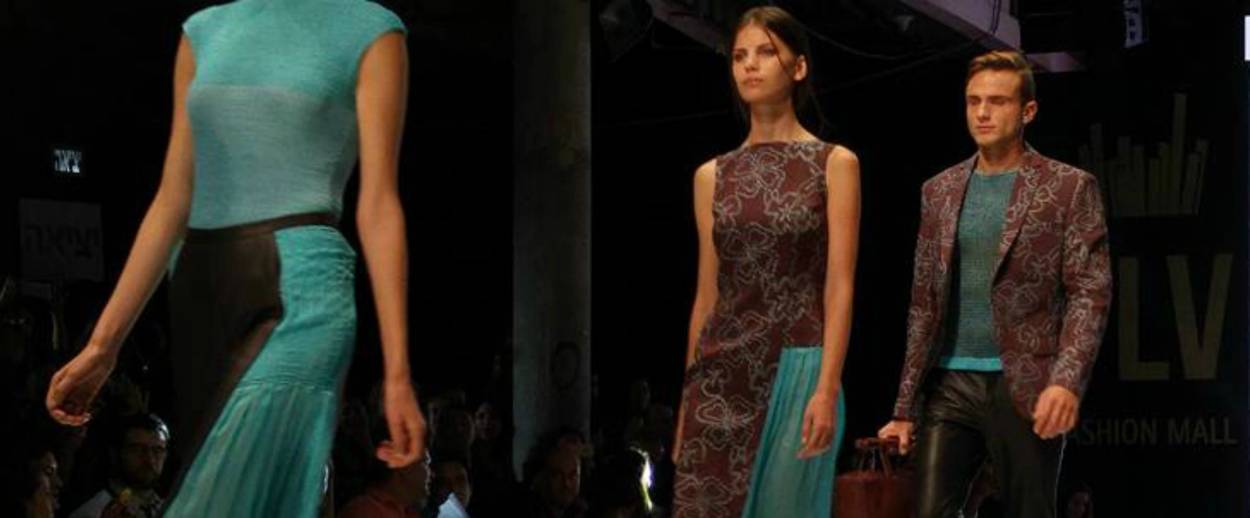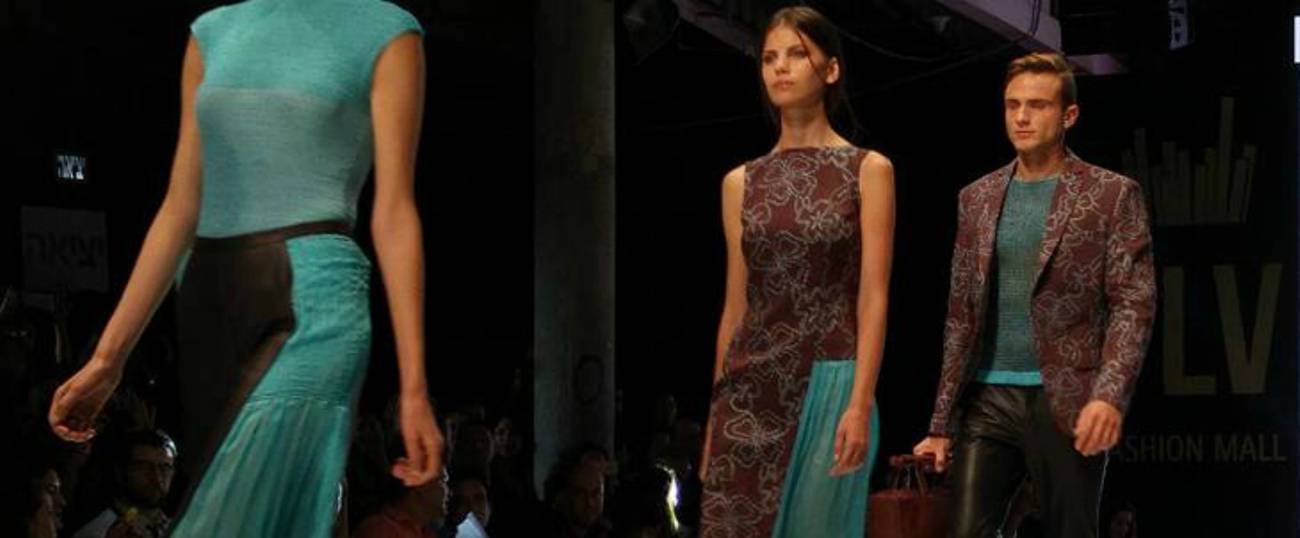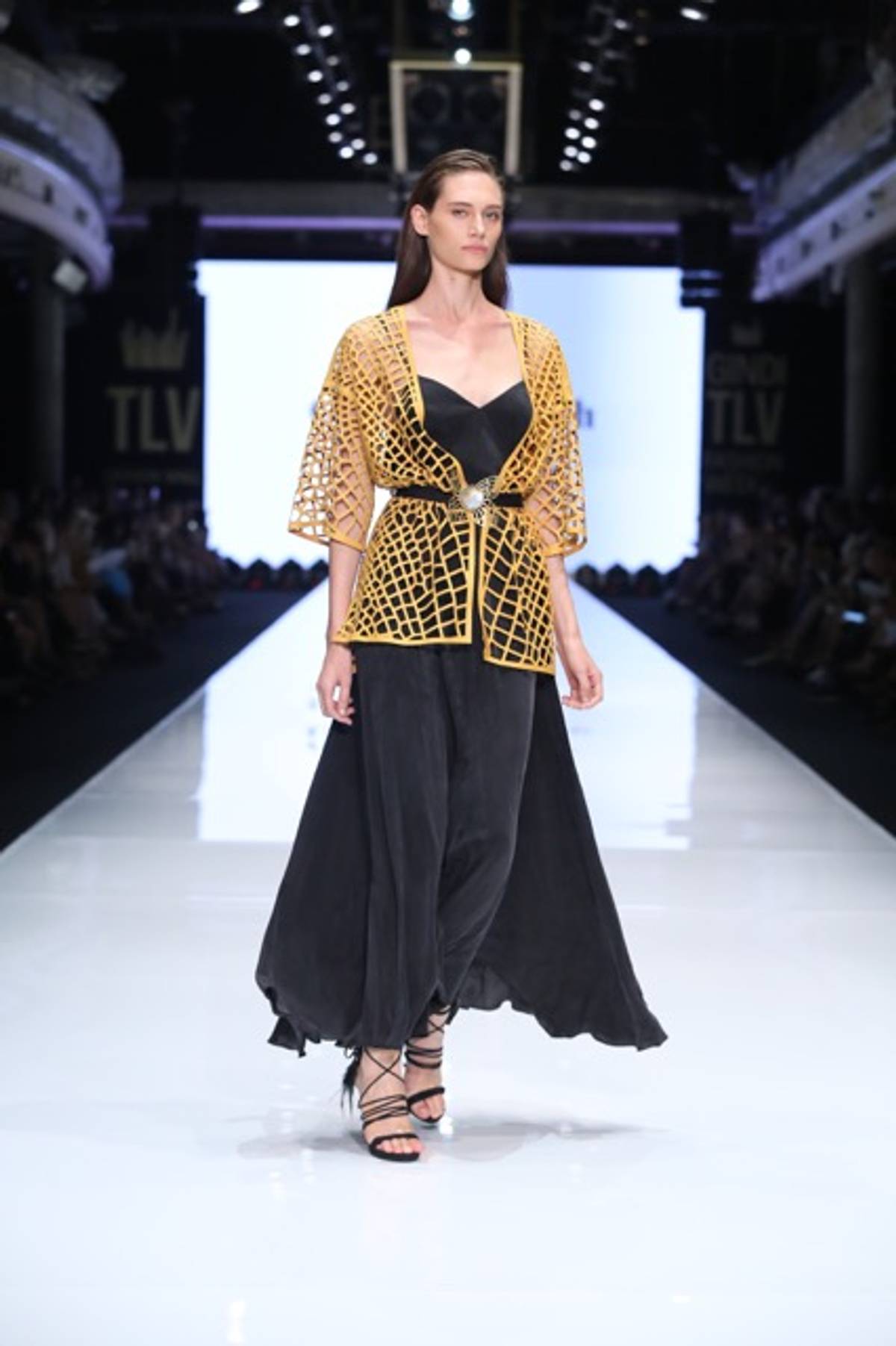Work in Progress: Tel Aviv’s Fashion Week
A dispatch from the Israeli catwalk, housed in an open-air mall-in-construction




The headquarters for this year’s Fashion Week in Tel Aviv, which concluded this week, was the Gindi Fashion Mall, located on a road mostly torn up by the city’s newly launched 10-year project to build a light rail. The 400,000 square foot shopping center itself is under construction and will not be ready for occupancy until Spring 2016. And yet, the show went on—in an open-air underground concrete pit. For three full days of shows, the space was transformed into an open-air lounge complete with a large circular bar in the center, scores of sofas, and seven rows of stadium seating from which the audience would watch model strutting the clothing of 36 designers along a 150-foot long lacquered runway.
The Gindi family—the real estate developer and visionary behind Fashion Mall—was mocked in the Israeli press for ushering Israel’s high society into an un-airconditioned venue with dust in the corners and red carpets that poorly disguised the uneven concrete flooring. Haaretz dubbed the event a “crude promotion…a transparent and overweening attempt to generate buzz.” Gidi family member and fashion blogger Lihi Gindi Levy, 15, was offended that not all of the press could see the ingenuity and resourcefulness behind the production. “They didn’t have to say it was perfect,” she said, “but maybe [they should have said] ‘look, we are standing underground. How cool.’” Indeed, it was cool. And more than cool, it worked.

In fact, placing Fashion Week in the Gindi Fashion Mall turned out to be a fitting metaphor for the current state of Israel’s fashion industry: a work in progress but undeniably ambitious. This is the first year that a delegation of international buyers attended Tel Aviv Fashion Week, and it’s through this lens that the rise of Israeli fashion, however inchoate, becomes clear.
Jeffrey Sandler, the owner of JS Consulting, a consulting firm that specializes in promoting Israeli designers throughout the world, said his business is booming because so much of Israeli fashion is poised for export. “Everything about Israeli fashion—the fabrics, the design, the silhouettes—is different and more cutting edge than what you see elsewhere,” he said. “The dream of every buyer is to have things no one else has. They can find that here.”
Dorinne Tal, a New York City buyer for COURAGE b’s seven high-end boutiques across the country, said she was “impressed and inspired” by what she saw at TLV Fashion Week. Most importantly, for her purposes, the designs fit into a wearable collection. “The merchandising is perfect,” she said. “The collections are complete and well-organized. It is easy to see how the fabrics coordinate to create a look. And that is important because it helps stores fill the needs of most women who want to take home an outfit rather than isolated pieces.”
Take, for example, a design from Gadi Elimelech, which boasted a soft black silky chiffon dress under a yellow cardigan with a stiff wet look; the cardigan was tied together with a belt made from leather, a third material. Or Common Raven’s black cropped pant, white cropped shirt and long black trench coat—stand alone pieces easily imaginable as basics on their own—coordinate together to create a look that is sharp and edgy.
Tal is not the decision maker on the buying for her company, so she needed a designer’s lookbook and line sheet (an order form with prices and anticipated delivery dates) to take back to the company’s owners to review. Some designers did not have look books, a sign that they aren’t yet prepared to sell their lines to international shops and buyers who cannot visit the studio and see the collections in person. Even designers with look books do not have experience selling their lines to U.S. retailers. If they did, explained Sandler, they would almost certainly need to adjust their sizing to fit American men and women who tend to be larger than Israelis.
What this may add up to is list business. Some fabulously talented designers did not have lookbooks, and Tal immediately crossed them off the list. “It takes a lot of money to make goods for export,” she said. “You have to have confidence that the designer can meet the volume demands and delivery dates.” Asked whether she has that confidence in the designers she has her eye on for orders, she said: “I don’t know yet because this is a first experience.” Still because “the finish on the designs is world class and style is at the forefront,” Tal will recommend that her company give it a go. In the end “you have to trust the people who represent the collections. There is a first time for everything.”
Shelley J. Klein, the former Executive Director of Congregation Beth Elohim (CBE) in Park Slope, Brooklyn, is spending this year in Tel Aviv with her family.